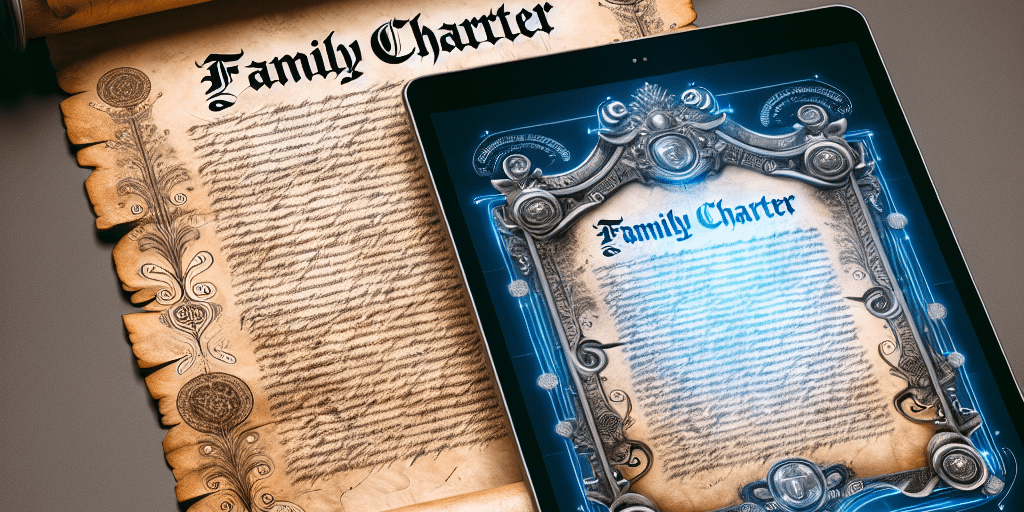In an ever-changing world, the values that guide our families can easily become outdated or misaligned with our current lifestyle and aspirations. A family charter, a document that outlines your family’s beliefs, values, and principles, can serve as a compass for navigating challenges and making decisions together. Revisiting and updating this charter is a crucial exercise, especially as societal norms evolve and new generations bring their perspectives and experiences into the fold. Here’s how to effectively update your family charter for the modern age.
1. Gather the Family: Embrace Inclusivity
The first step in updating your family charter is to involve all family members in the process. Schedule a family meeting where everyone can express their thoughts and ideas openly. This is a chance to hear voices that may not have been present during the original drafting of your charter.
Encourage a dialogue that allows each person, from the youngest to the oldest, to share their priorities, experiences, and values. Creating a safe environment for expression is key, as it fosters inclusivity and promotes bonding.
2. Reflect on the Past: Evaluate Existing Values
Before making updates, take time to reflect on the original charter. Engage in discussions about what has worked and what hasn’t. Which values have stood the test of time, and which ones feel outdated or irrelevant?
Consider how life events, societal changes, and personal growth have influenced your family’s dynamics. Perhaps the rise of technology, shifts in social norms, or evolving career paths have introduced new values that your family holds dear today.
3. Identify Modern Values: Emphasize Relevance
As you embark on this journey of updating your family charter, identify values that resonate with the modern age. Focus on principles that not only support your family’s vision but also reflect contemporary societal changes. Some modern values you might consider include:
- Diversity and Inclusivity: Emphasizing acceptance of different backgrounds, identities, and beliefs can foster a sense of belonging.
- Sustainability: Reflecting a commitment to environmental well-being can guide your family’s choices and lifestyle.
- Digital Responsibility: In a tech-driven world, it’s essential to define boundaries and expectations around screen time, social media use, and digital citizenship.
- Mental Health and Well-being: Recognizing the importance of emotional health and resilience can help create a supportive family atmosphere.
- Family Engagement: Establishing the importance of quality time spent together can strengthen family bonds amidst busy schedules.
4. Create Collaborative Goals: Unite on a Shared Mission
Once the new values have been established, involve family members in creating goals that align with these principles. These goals can be both short- and long-term and might include planning family activities, creating service projects, or committing to open communication practices.
When everyone plays a role in setting and achieving these goals, it fosters a sense of ownership and dedication to the family charter. Establishing a timeline for reevaluation can also create a natural opportunity for revisiting your values in the future.
5. Document the Updated Charter: Make It Official
After the discussion, compile the finalized family values and goals into a new family charter. Make sure it reflects the collective voice of the family and feels authentic to everyone involved.
Consider incorporating creative elements such as family symbols, a mission statement, or even a family motto that encapsulates your core beliefs. Celebrate the completion of this document with a family gathering and discuss how to live out these values in daily life.
6. Lead by Example: Model the Values
Updating a family charter is just the first step; the real work lies in embodying the values you’ve established. As parents and guardians, it’s essential to model these values in your actions and decisions. Encourage open dialogue about how family members can strive for these goals collectively and individually.
Make it a part of your family culture to regularly acknowledge and celebrate when family members exemplify charter values, reinforcing their significance in your family life.
Conclusion
Updating your family charter is not just an exercise in list-making; it’s a meaningful engagement in understanding who you are as a family and where you want to go. In a world that advances rapidly, revisiting your family values allows you to create a living document that adapts and grows with you. By involving everyone in this process, you not only strengthen family bonds, but you also foster a shared vision for navigating the complexities of the modern age together. Embrace the journey of values exploration, and watch your family thrive in harmony and purpose.










